The European Researchers’ Night (ERN) takes place on September 26, but the activities are not limited to that day alone. A series of pre-events is held across the country, organised and coordinated by various institutions. Once again, INESC TEC was actively involved. In Porto, the Institute collaborated with i3S to host a pre-event, while in Braga, we joined the National Centre for Advanced Computing (CNCA) to participate in the celebrations of September 26, showcasing the Deucalion supercomputer.
“Sustainability in Robotics” – the pre-event
The pre-event organised by INESC TEC in Porto took place on September 18; it was a Science Café under the theme “Sustainability in Robotics.”
In a relaxed and interactive setting, INESC TEC researchers specialising in robotics and intelligent systems engaged with participants in the Institute’s Industry and Innovation Laboratory (iiLab). They explored three innovative applications developed by the Institute, demonstrating how technology can support environmental protection: precision agriculture, textile recycling with computer vision, and intelligent e-waste disassembly.
Beyond the initial presentations, participants experienced live demonstrations, bringing science closer to everyday life and highlighting the concrete work carried out at INESC TEC.
Why this theme and these projects? INESC TEC researchers explained:
“E-waste is currently the fastest-growing waste stream in the world. In 2022, 62 million tonnes were generated – an 82% increase since 2010 – with less than 25% correctly recycled,” explained Manuel Silva, who coordinates INESC TEC’s Robotics and Intelligent Systems area.
Other researchers highlighted that, on average, people replace their smartphones every three to four years and their laptops every three years. These devices contain valuable metals like gold, copper, and cobalt, as well as toxic substances like lead and mercury, which can contaminate air, water, and soil if not properly managed.
“Traditional recycling methods, based on manual disassembly or shredding, are no longer sustainable. Manual dismantling is slow and hazardous, while shredding mixes valuable materials, making recovery difficult. Automated disassembly systems using robots can precisely separate reusable and hazardous components, recover critical materials, reduce human exposure to risk, and are scalable, consistent, and aligned with Circular Economy and Industry 4.0 principles,” added Manuel Silva.
As one of INESC TEC’s five strategic commitments for 2030 is “to make an impact on the most pressing challenges of our time in science, technology, and society, through bold creativity and transformative actions”, the Institute could not fail to address, among other issues, this serious problem.
The textile industry, one of the world’s most polluting sectors, faces similar challenges – with few solutions in terms of sustainability and circularity.
“Europeans generate over 15 kg of textile waste per person per year, which could rise to 20 kg by 2030. Less than 1% of post-consumer textile waste is recycled into new fibres. Transitioning to responsible models is urgent, incorporating sustainable raw materials, prolonging product lifespans, and developing reuse and recycling systems that enable a true circular economy,” explained Tony Ferreira and Daniel Lopes.
INESC TEC contributes to this sector through solutions for fibre identification and accessory removal – topics discussed by researchers during the event.
Finally, precision agriculture:
“The increase in the global population, climate change, the shortage of skilled labour, and the need to produce more functional and nutritious food are driving agriculture and forestry to adopt new ways of working – more digital, intelligent, and sustainable,” said INESC TEC researcher Vítor Tinoco.
Today, agriculture is no longer just about tractors and hoes; it is transforming into a high-tech field, where robots assist with pruning and harvesting, drones monitor crops from the air, sensors measure soil health in real time, and intelligent systems decide the optimal amount of water or fertiliser to apply.
“It is a true outdoor laboratory”, explained Vítor Tinoco, “where science, engineering, and nature work side by side.”
Technologies such as monitoring and surveillance, precision spraying, vegetation cover management, smart soil fertilisation, and automated pruning and harvesting not only increase profitability and make the sector more sustainable, but also open new opportunities for those interested in technology, programming, electronics, mechanics, AI, or simply being in contact with nature. Working in the agriculture of the future may involve programming robots, designing innovative sensors, flying drones, or developing applications that help farmers make better decisions – and this was one of the topics discussed during the Science Café organised by INESC TEC researchers.
At this year’s pre-event on sustainability in robotics, the participating INESC TEC researchers were Manuel Silva, Vítor Tinoco, Pedro Dias, Tony Ferreira, Carlos Costa, and Daniel Lopes.
The Deucalion Supercomputer at European Researchers’ Night
In Braga, the September 26 evening activities featured a presentation of the Deucalion supercomputer, with a series of actions related to advanced computing. The stand offered initiatives open to the public, designed for different age groups, giving visitors the opportunity to learn about Deucalion, understand what it is, how it works, in which areas it can make a difference, and how it can help address current and future challenges.
Through activities such as “O Supercomputador em Paralelo” e “A Batalha Paralela de Cores”, younger audiences had the chance to understand the difference between a regular computer and a supercomputer, as well as how Deucalion can accelerate research and innovation, producing results faster and with greater impact.
Another activity, the “Simulação de Supercomputação”, allowed visitors to explore Deucalion’s potential through practical tools: an interactive chatbot that answered questions, generated content, and supported decision-making; and a deep learning model for global weather prediction, capable of estimating atmospheric variables such as wind, temperature, pressure, and humidity, and even forecasting natural disasters. Through these experiences, participants could compare tool performance across different devices – from a Raspberry Pi, to a commercial computer, and up to Deucalion itself.
“Participation in this event was a unique opportunity for CNCA, via Deucalion, and for INESC TEC to share with the community the knowledge we have been developing in advanced computing,” says António Luís Sousa, Operations Director of Deucalion.
“For INESC TEC, demonstrating how we work closely with Deucalion highlights the potential of this infrastructure to accelerate science and innovation and to foster HPC adoption in industry. This proximity to industry is essential to create new synergies, strengthening the link between research and practical application,” he added.
In addition, the stand featured a video on the construction of the data centre and general information about the machine, as well as a raffle with prizes from CNCA partners, making the experience even more dynamic and engaging.
Alongside António Luís Sousa, INESC TEC was represented by Alícia Oliveira, Ângelo Fernandes, José Pedro Peixoto, Luís Ferreira, Miguel Peixoto, and Paula Rodrigues, as well as Andreia Gaudêncio, Diogo Pires, Francisco Ferraz, Guilherme Fernandes, and Rui Silva from the Deucalion and CNCA teams.
The European Researchers’ Night and associated events target the whole of society, focusing on young students interested in science and keen to learn more about research activities in Portugal. This initiative provides a unique opportunity to bring science closer to society.
The researchers mentioned in this news piece are associated with INESC TEC, ISEP and UMinho


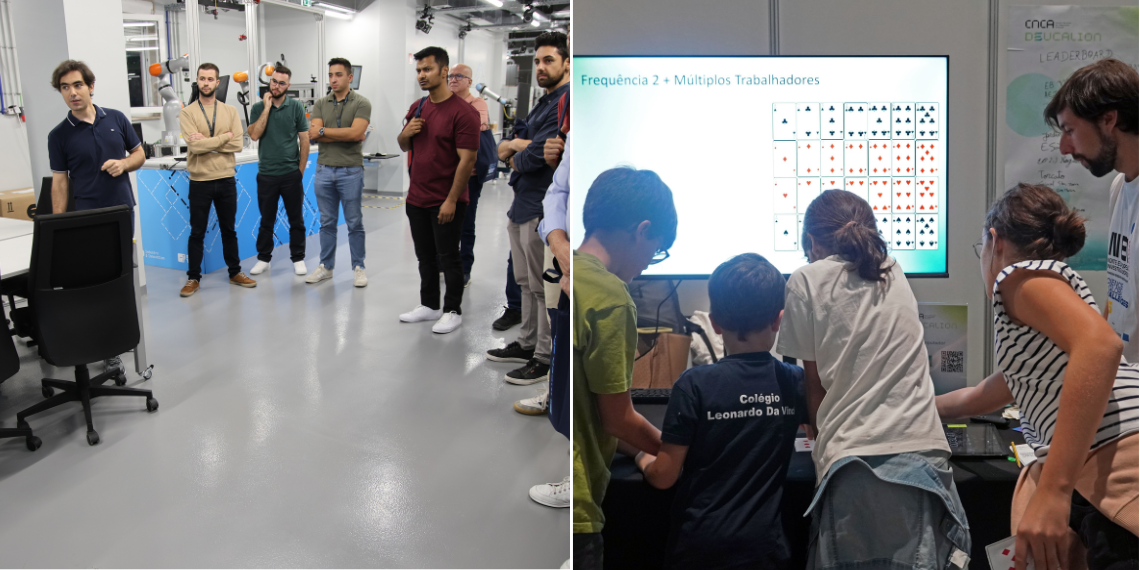
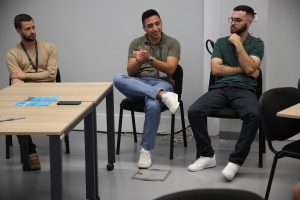
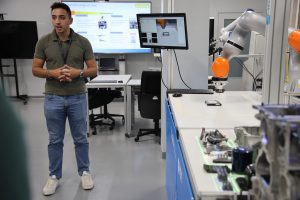
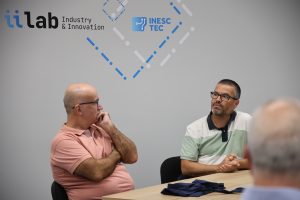
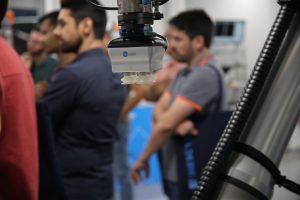
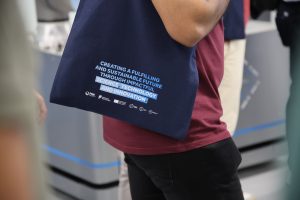
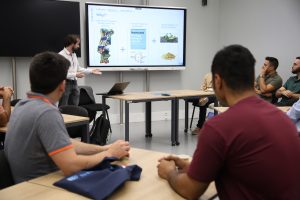
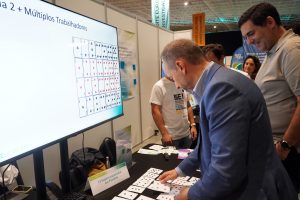
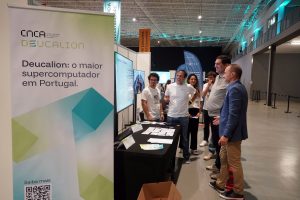
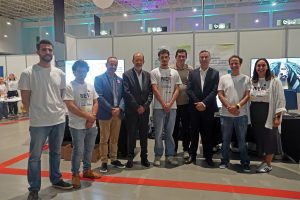
 News, current topics, curiosities and so much more about INESC TEC and its community!
News, current topics, curiosities and so much more about INESC TEC and its community!